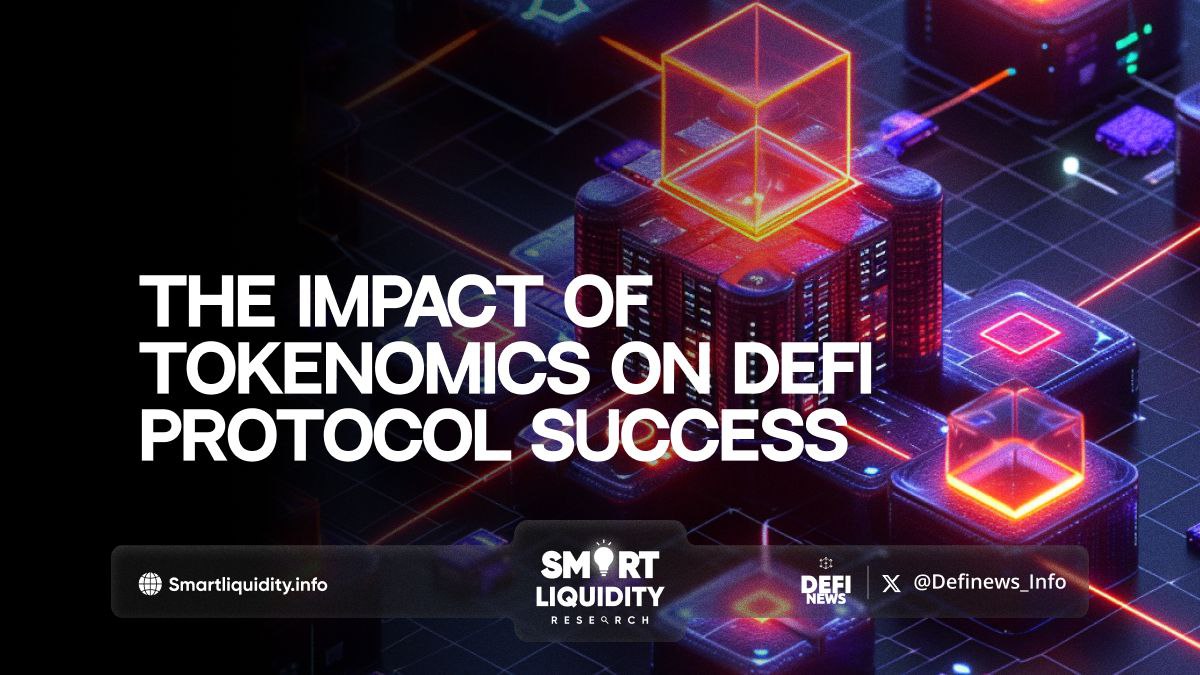The Impact of Tokenomics on DeFi Protocol Success


The Impact of Tokenomics on DeFi Protocol Success! In the rapidly evolving world of decentralized finance (DeFi), tokenomics plays a critical role in determining the success or failure of protocols. Tokenomics, a portmanteau of “token” and “economics,” refers to the design and structure of a cryptocurrency’s economic model.
It encompasses everything from the distribution and supply of tokens to the incentives and utility they provide within a network. This article explores how tokenomics can make or break a DeFi protocol, highlighting key factors that influence outcomes.
The Foundation of Tokenomics
Tokenomics serves as the backbone of any DeFi protocol, dictating how tokens are created, distributed, and utilized. A well-designed tokenomics model aligns the interests of developers, investors, and users, ensuring sustainable growth and adoption. Key elements of tokenomics include:
- Token Supply and Distribution
The total supply of tokens, along with how they are distributed among stakeholders, is crucial. A fair distribution can prevent the centralization of power, while an optimal supply helps manage inflation and deflation risks. - Utility and Governance
Tokens often serve multiple purposes within a DeFi ecosystem. They may be used for governance, allowing holders to vote on protocol changes, or for accessing services within the network. The utility of a token directly impacts its demand and long-term value. - Incentive Structures
Incentives are at the heart of tokenomics, driving user participation and loyalty. Whether through staking rewards, liquidity mining, or yield farming, the design of incentives can attract and retain users while fostering network growth.
Tokenomics and Protocol Success
The success of a DeFi protocol is intricately linked to its tokenomics. A well-crafted tokenomics model can lead to widespread adoption, high liquidity, and robust community engagement. Conversely, poor tokenomics can result in low user interest, price volatility, and ultimately, the failure of the protocol. Here are some examples of how tokenomics impacts DeFi’s success:
- Sustainability Through Staking
Protocols that incorporate staking mechanisms often enjoy increased stability. By locking up tokens, users contribute to the security and governance of the network while earning rewards. This reduces the circulating supply and can lead to price appreciation over time. - Liquidity Provision and Yield Farming
Liquidity is the lifeblood of DeFi. Tokenomics models that incentivize liquidity provision through yield farming can create deep pools of liquidity, making the protocol more attractive to traders and investors. However, unsustainable rewards can lead to short-term speculation and subsequent market crashes. - Governance and Decentralization
Governance tokens empower the community to participate in decision-making processes. A decentralized governance model can enhance trust and resilience, attracting more users and developers to the protocol. However, if power becomes too concentrated, it can undermine the protocol’s decentralization ethos.
Case Studies: Successes and Failures
To illustrate the impact of tokenomics on DeFi protocol success, let’s examine two contrasting case studies:
- Uniswap (UNI)
Uniswap’s tokenomics have been instrumental in its success. The UNI token serves as both a governance token and an incentive for liquidity providers. The protocol’s decentralized governance model has allowed for community-driven growth, and its fair distribution of tokens has encouraged widespread participation. As a result, Uniswap remains one of the most popular decentralized exchanges in the DeFi space. - SushiSwap (SUSHI)
While SushiSwap initially gained traction with its attractive yield farming incentives, its tokenomics also led to challenges. The high inflation rate of the SUSHI token caused significant price volatility, and the rapid issuance of new tokens diluted the value for existing holders. Although SushiSwap has since made adjustments to its tokenomics, its early struggles highlight the importance of sustainable economic models.
The Future of Tokenomics in DeFi
As DeFi continues to mature, tokenomics will evolve to meet new challenges and opportunities. Future protocols may experiment with dynamic supply mechanisms, novel incentive structures, and more sophisticated governance models. The success of these innovations will depend on how well they align with the needs and behaviors of the DeFi community.
In conclusion, tokenomics is not just a technical aspect of DeFi protocols—it is a strategic tool that can determine their fate. By carefully designing tokenomics models that promote sustainability, decentralization, and user engagement, DeFi projects can increase their chances of success in an increasingly competitive landscape.




